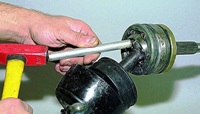Refilling is carried out through the appropriate hole (Fig. 1).
Use a 15/100 mesh filter funnel to avoid contamination.
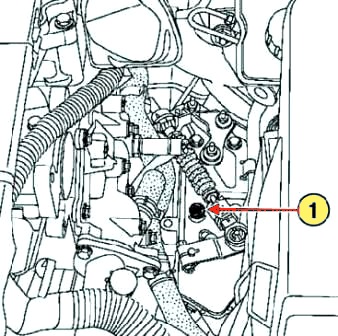
Use a 15/100 mesh filter funnel to avoid contamination.
Put the vehicle on a level, level surface.
Disconnect the wires from the battery terminals, starting with the negative terminal.
Disconnect the wire blocks from the computer.
Remove the battery shelf bolts
Remove the battery tray and ECU bracket.
Move aside the boost pressure regulator air control solenoid valve (if equipped with a turbocharger).
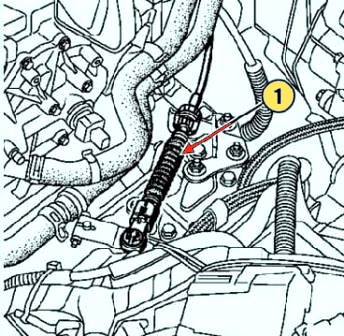
Remove the throttle cable (fig. 3).
Disconnect the cable from the lever on the gearbox:
- - squeeze the tip of the cable at points A;
- - pull the latch in direction B;
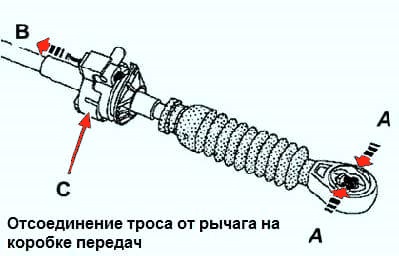
- - lift the accelerator cable at point C (fig. 4).
Pour 3.5 liters of fresh oil into the automatic transmission.
Connect the wires to the battery terminals, starting with the positive terminal.
Start the engine to idle.
Connect the diagnostic tool ( CLIP).
Initiate dialogue with the automatic transmission computer.
Watch the temperature of the oil in the box.
When the temperature reaches 60°C ±1, unscrew the control hole plug.
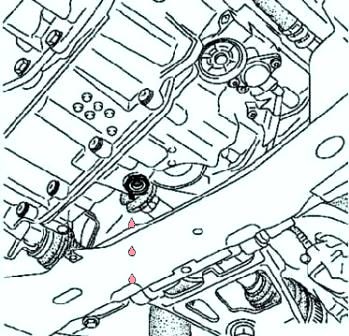
Install the vessel, if the oil does not leak out or the amount of leaked oil is less than 0.1 l - stop the engine (Fig. 5).
Add 0.5 liters of oil, let the gearbox cool down to 50°C and start the engine at idle.
Reconnect the diagnostic tool (CLIP) and start dialogue with the automatic transmission computer.
Watch the automatic transmission oil temperature parameter.
When the temperature reaches 60°C ±1, unscrew the control hole plug.
Place a container under the car to collect the oil.
Repeat these operations until more than 0.1 l of oil has been poured into the container.
Replace the control hole plug.
Tighten the inspection plug to the required torque (35 Nm).
In the event of an oil change, the electronic oil life counter (built into the computer) must be reset.
Record the oil change date by running command: CF074 "Record gearbox oil change date" using the diagnostic tool (CLIP).
In case of repair work on an automatic transmission, the following parts must be replaced:
- – self-locking nuts;
- - gaskets;
- - rubber pads;
- - torque converter mounting bolts.
Draining and refilling automatic transmission oil
Preparing the car for work. We install the car on a lift or a viewing ditch.
Remove the protection of the crankcase of the power plant to access the drain plug.
The drain plug is also a control plug.
We substitute a container with a volume of 4 - 5 liters to drain the oil.
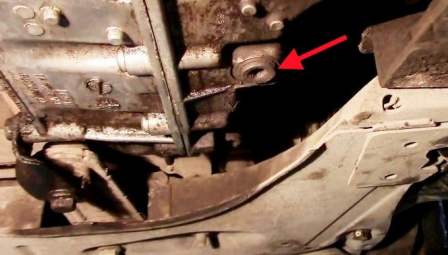
Unscrew the drain plug with an 8 mm square.
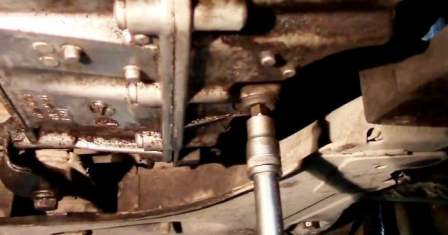
Drain the oil from the drain (control) hole.
Since there is a level flask inside, the oil will drain out even not all.

After that, unscrew the level flask.
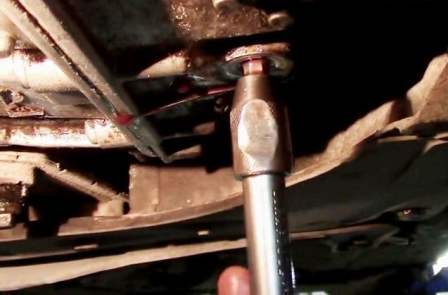
Insert an 8 hexagon into the drain hole, and unscrew the level flask.
The level flask (oil level control plug) is plastic, so it is not necessary to tighten it strongly during installation.
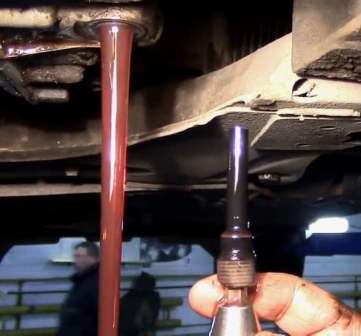
This is what the level flask looks like.
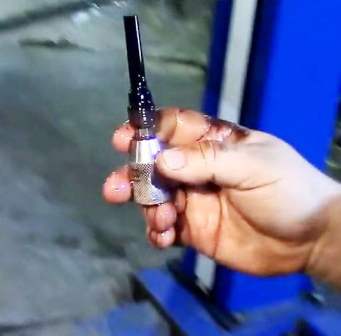
After all the oil has been drained, install and twist the level flask by hand.
We twist the drain control plug by hand, too.
We determine the amount of oil drained from the gearbox. You need to fill in about the same amount.
If the car was on a lift, then lower it and prepare it for filling oil.
Opening the hood.

Loosen the duct clamps and remove it.

Unscrew the filler plug with an 8 mm square.
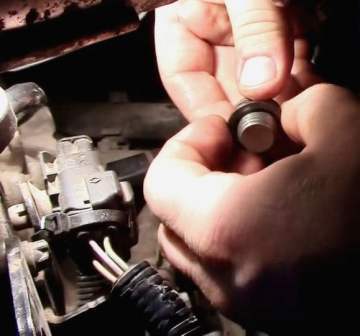
Remove the cork.
The plug is sealed with an o-ring.

Insert a funnel with an extension into the filler hole and fill in the oil in the amount of drained oil.
After that, start the car and warm up the engine to operating temperature.
After the engine has warmed up at idle, we switch sequentially through all modes with the selector lever so that the oil spreads over the internal parts of the automatic transmission.

Set the mode selector lever to the parking position.

Unscrew the drain plug and drain excess oil.
When oil starts to drip from the control hole, this indicates that the oil is filled to the level.
After that, we tighten the drain control plug with a torque of 35 Nm, and pour another 300 grams of oil through the filler hole.









